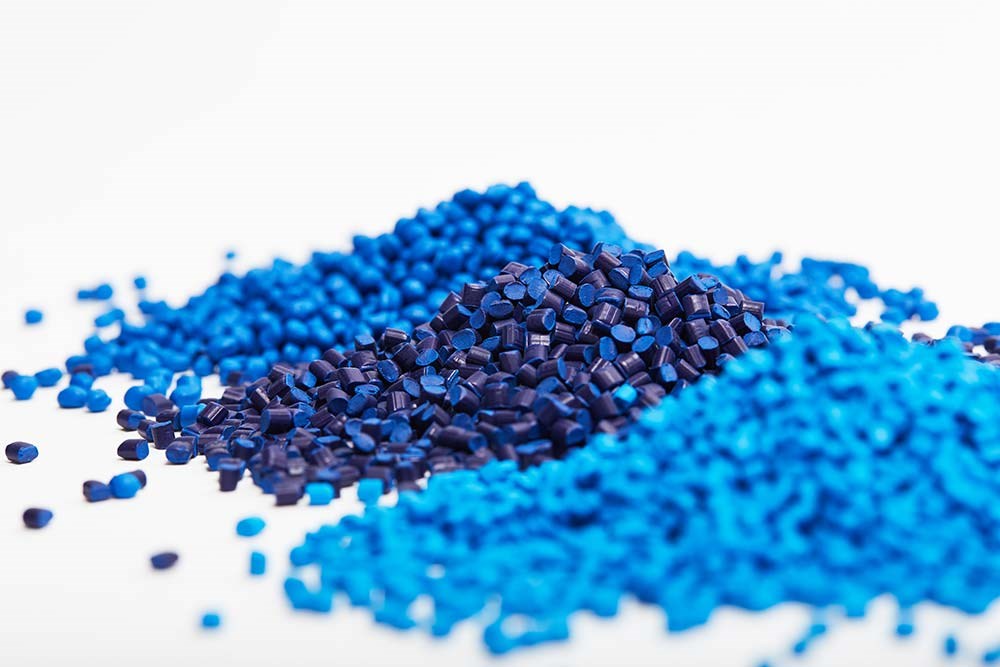
One of the most critical steps in a plastic injection molding project is identifying the right resin for the job. Each material has a specific profile, and different applications require certain characteristics to make sure the product performs well in its environment, is cost-effective, and overall provides the best value.
The properties of the resins themselves are also varied. They span the spectrum when it comes to physical and mechanical properties, reaction to temperature or chemical exposure, strength, and even aesthetics such as color and texture. Some materials work better in applications that require regulatory compliance. When choosing the right resin for your custom injection molding project, these are all considerations that should be thought through at the forefront.
What physical or mechanical properties does your project require?
The size, thickness, and shape of the part will play a role in the material selection process. Likewise, if the part will be carrying a load, you’ll need to consider how heavy it will be and the type of stress (tensile, flexural, etc.) and the maximum amount of stress the part will need to withstand. Think about whether static dissipation or conductivity is important for the functionality or safety of the product.
Have an idea of the expected lifespan of the product with these considerations to figure out if you’ll need a material with high durability, rigidity, and dimensional stability.
What environment will the product be in, and what will it be exposed to?
There are several environmental factors to consider when producing a part. Is it exposed to high heat or extreme cold? Will it be outside in the elements, with wind, rain or sun beating down on it? Is it going to be placed near bodies of salt water or sand that may erode the finish? Will it be subject to fire, and/or need to be flame retardant rated? All of these can affect the integrity and longevity of the material used to make the part.
Chemical exposure, which can occur with plastics used in industries such as gas and oil, will determine not only what type of material to choose, but also which additives are appropriate to include. Additives can literally make or break a product based on its environment.
A major factor to consider is whether or not the product will be exposed to radiation, like equipment used in the medical field. Material selection, in this case, is vital not only for performance but also for the health implications of patients and healthcare workers. Previously, lead was used to protect from radiation, but lead has proven to be toxic. Now, tungsten-filled polymers can be safely and reliably used in place of lead to shield from radiation.
Does the product need to meet regulatory requirements?
The FDA, USDA, CPA, CPSC and other government entities are pretty finicky when it comes to products complying with their regulations. Rightfully so -- often, it’s to promote health and safety and reduce dangerous or unethical conditions. But the material you choose for your product will make a difference in whether or not it complies with some of these regulations.
The food, pharmaceutical, and consumer products industries all are particularly susceptible to evolving regulations as new scientific evidence and public pressures lead to a closer look at certain materials and their applications. Staying up to date on regulatory requirements and compliance is tough, but the first step is knowing that the material you choose may be impacted by these ever-shifting conditions. Partnering with experts in material selection helps to keep you on track.
What else does your product require?
Consider things such as color, texture, transparency and other aesthetic features for your product, as well as whether the environment it’s in will impact that appearance when you’re considering which material to use. Longevity in terms of performance is only one factor of quality -- depending on the application, a product’s quality can also be judged on the longevity of its visual appeal.
Commodity vs. Engineered Resins
Once all of the factors are considered for your project, you can work with an experienced engineer to select a plastic resin or combination of resins that meet your needs. The various requirements will determine whether the material is a commodity resin or an engineered resin.
Commodity resins are common, less expensive and easier to produce but may come with limitations if your product is required to be in harsh conditions or meet stringent regulations. Engineered resins can be formulated to fit special requirements to withstand the most severe or unforgiving environments and conditions.
Failing to choose the proper material and/or additive can result in permanent changes to the properties of the material, causing it to become brittle and ultimately leading to product failure and perhaps even health hazards.
It’s important to start your project planning by considering the different aspects of your product and what will be required of it, then to choose a material to meet those criteria. The experts at Thogus are highly trained in material selection so that we can support you from project inception to completion and beyond.
Click here for more information.
Experience the Thogus Difference
Connect with us today to discuss your project and to learn more about our capabilities.